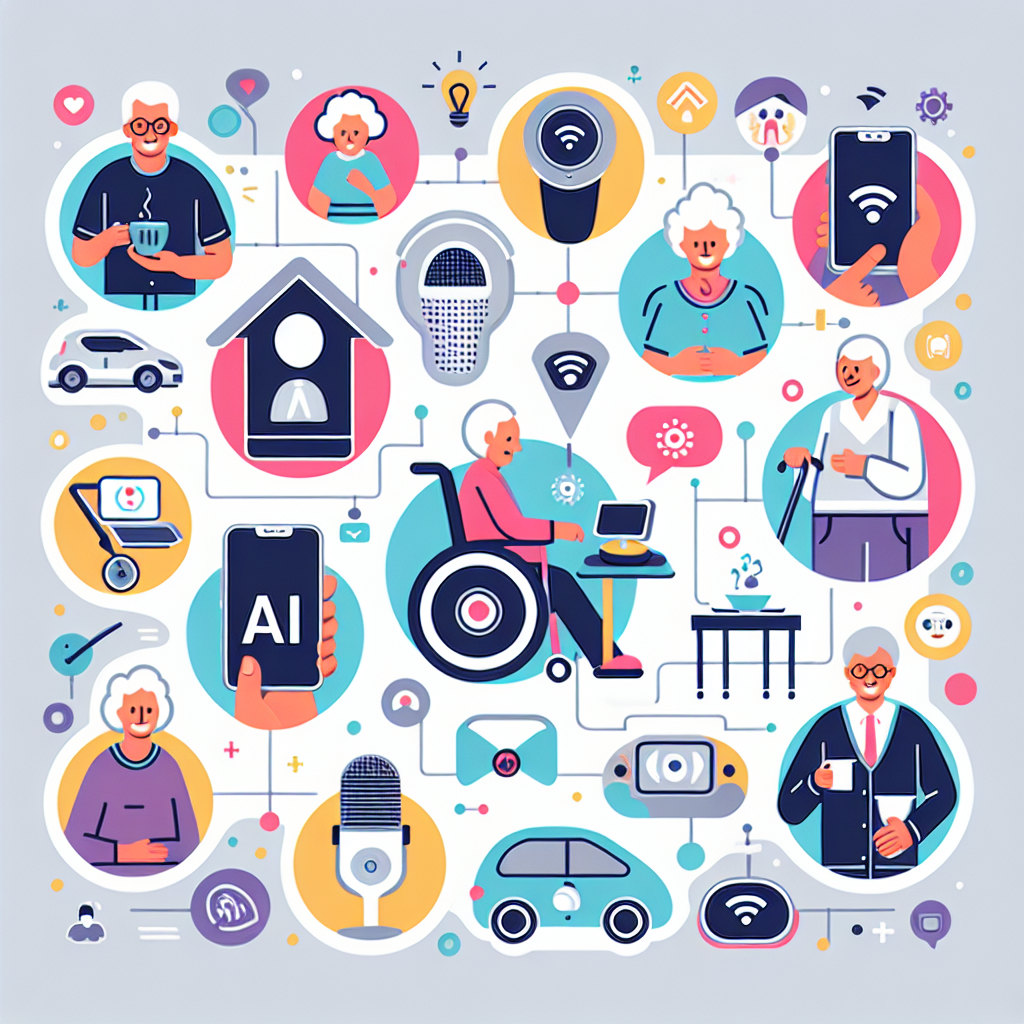As the world’s population continues to age, the demand for innovative solutions to support the well-being and independence of older adults is growing. One area where technology has the potential to make a significant impact is in the design of products and environments that cater to the unique needs of aging populations. Artificial intelligence (AI) is one such technology that holds promise in this regard, offering the ability to create personalized, adaptive, and user-friendly designs for older adults.
AI in Designing for Aging Populations:
AI has the potential to revolutionize the way we design products and environments for aging populations in several key ways:
1. Personalization: AI can analyze data collected from older adults to create personalized designs that cater to their specific needs and preferences. For example, AI algorithms can analyze a person’s mobility, vision, hearing, and cognitive abilities to create a customized home environment that maximizes safety and comfort.
2. Adaptive Design: AI can create designs that adapt to the changing needs of older adults over time. For example, AI-powered smart home systems can adjust lighting, temperature, and other environmental factors based on the individual’s preferences and health status.
3. User-Friendly Interfaces: AI can create intuitive and user-friendly interfaces that are easy for older adults to navigate. For example, AI-powered voice assistants can help older adults control smart home devices, access information, and communicate with others more easily.
4. Preventive Care: AI can help identify potential health issues before they become serious by analyzing data collected from sensors and wearable devices. For example, AI algorithms can detect changes in gait patterns that may indicate an increased risk of falling, allowing for early intervention.
5. Social Interaction: AI can create virtual companions and social networks for older adults to combat loneliness and isolation. For example, AI-powered chatbots can provide conversation and companionship, while virtual reality platforms can facilitate social interactions with family and friends.
FAQs:
Q: How can AI be used to design products for aging populations?
A: AI can be used to analyze data collected from older adults to create personalized, adaptive, and user-friendly designs that cater to their specific needs and preferences. For example, AI algorithms can analyze a person’s mobility, vision, hearing, and cognitive abilities to create a customized home environment that maximizes safety and comfort.
Q: What are some examples of AI-powered products for aging populations?
A: Some examples of AI-powered products for aging populations include smart home systems that adjust lighting, temperature, and other environmental factors based on the individual’s preferences and health status, wearable devices that monitor health metrics and provide early warning of potential health issues, and virtual companions and social networks that combat loneliness and isolation.
Q: What are the benefits of using AI in designing for aging populations?
A: The benefits of using AI in designing for aging populations include personalized designs that cater to the specific needs and preferences of older adults, adaptive designs that change over time to meet their changing needs, user-friendly interfaces that are easy to navigate, preventive care that identifies potential health issues before they become serious, and social interaction that combats loneliness and isolation.
Q: Are there any challenges to using AI in designing for aging populations?
A: Some challenges to using AI in designing for aging populations include privacy concerns related to the collection and use of personal data, the need for ongoing training and support to ensure older adults can effectively use AI-powered products, and the potential for bias in AI algorithms that may inadvertently discriminate against certain groups of older adults.
In conclusion, AI has the potential to revolutionize the way we design products and environments for aging populations by creating personalized, adaptive, and user-friendly solutions that cater to their specific needs and preferences. By harnessing the power of AI, designers can create innovative and inclusive designs that support the well-being and independence of older adults in an increasingly aging world.

